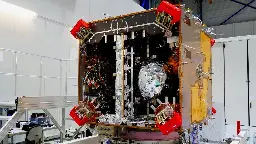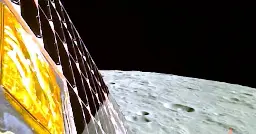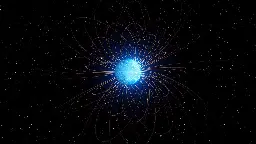Space
- Europe assembles Hera spacecraft to eye aftermath of DART asteroid crashwww.space.com Europe assembles Hera spacecraft to eye aftermath of DART asteroid crash (video, photos)
The sensor-packed detective spacecraft will scan the battered asteroid Dimorphos up close.

Summary
The Hera spacecraft has recently been assembled in Bremen, Germany by OHB. Its mission is to observe the result of NASAʼs DART mission which impacted Dimorphos in 2022-09. The Hera spacecraft will now be sent to the Netherlands for testing by the European Space Agency (ESA). The craft is scheduled to be launched by SpaceX from Cape Canaveral on 2024-10.
Stats
- Author: Andrew Jones
- Date: 2023-09-05
- Work: space.com
- Accessed: 2023-09-05
Further Reading
- Patrick Michel, et. al. (2022-07). “The ESA Hera Mission: Detailed Characterization of the DART Impact Outcome and of the Binary Asteroid (65803) Didymos”. The Planetary Science Journal, Volume 3, Number 7, Page 160. DOI: https://doi.org/10.3847/PSJ/ac6f52 . Accessed 2023-09-05. License: 🅭🅯 4.0.
- Chandrayaan-3 scheduled to die on September 4th

-
ISRO mission brochure; i.e. no Radioisotope thermoelectric generator (RTG), only 738 W solar panels
- Chandrayaan-3 landingwww.nytimes.com The latest on India’s successful moon landing.
Coming on the heels of Russia’s lunar lander crash over the weekend, India is hoping to become on Wednesday the first nation to set down in the moon’s south polar region.

- YouTube
- News coverage
- Indian Space Research Organization (ISRO)
- Time:
2023-08-23T12:34+00(UTC)2023-08-23T05:34-07(Los Angeles)2023-08-23T08:34-04(New York)2023-08-23T15:34+03(Helsinki)2023-08-23T15:34+03(Kyiv)2023-08-23T18:04+05:30(Delhi)2023-08-23T19:34+07(Jakarta)2023-08-23T20:34+08(Beijing)2023-08-23T22:34+10(Sydney)
What is Chandrayaan-3?
Chandrayaan means “moon craft” in Hindi. In addition to the propulsion module that pushed the spacecraft into orbit around the moon, the landing module consists of the Vikram lander and the Pragyan rover that will attempt to set down on the lunar surface in the moon’s south polar region. The mission is robotic and there are no astronauts aboard.
The Aug. 23 landing was selected because it is the day when the sun will rise at the landing site. The mission is to conclude two weeks later when the sun sets. While on the surface, the solar-powered lander and rover will use a range of instruments to make thermal, seismic and mineralogical measurements.
- Two-Faced: Wacky White Dwarf Keeps Its Surface Gases Separategizmodo.com Two-faced: Wacky white dwarf keeps its surface gases separate
The burnt-out star has one side composed of hydrogen and the other composed of helium. Astronomers have never seen anything like it.
